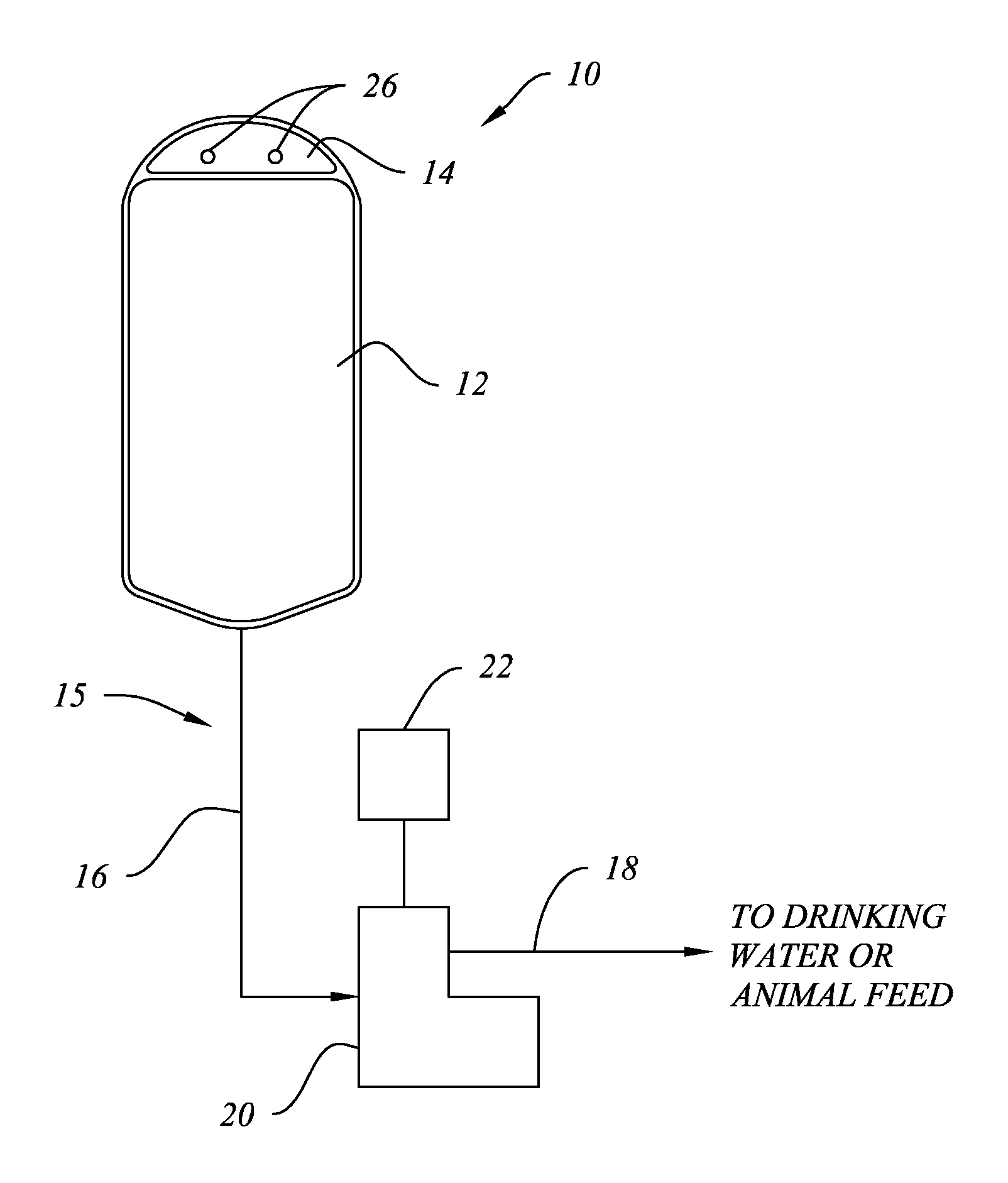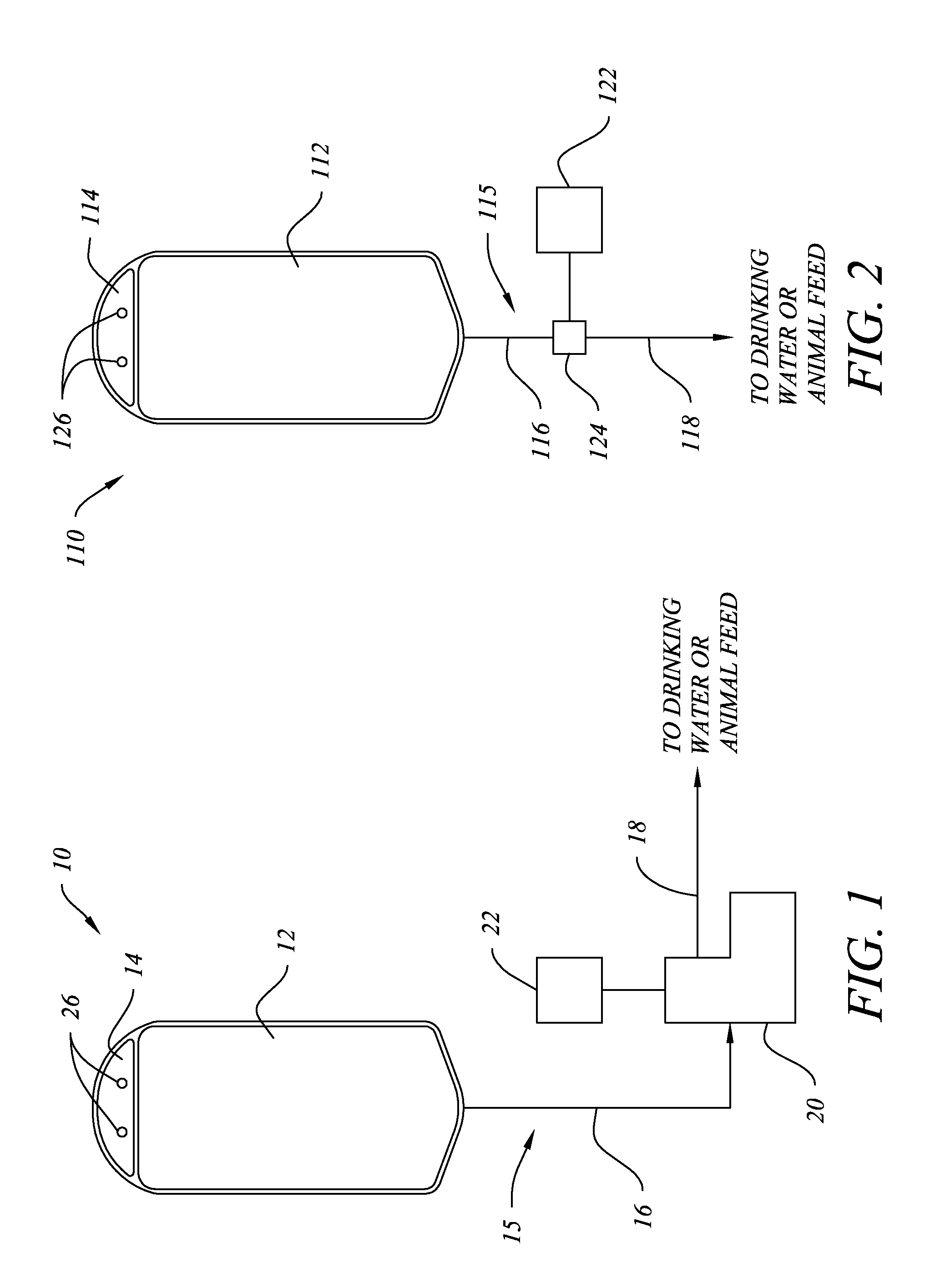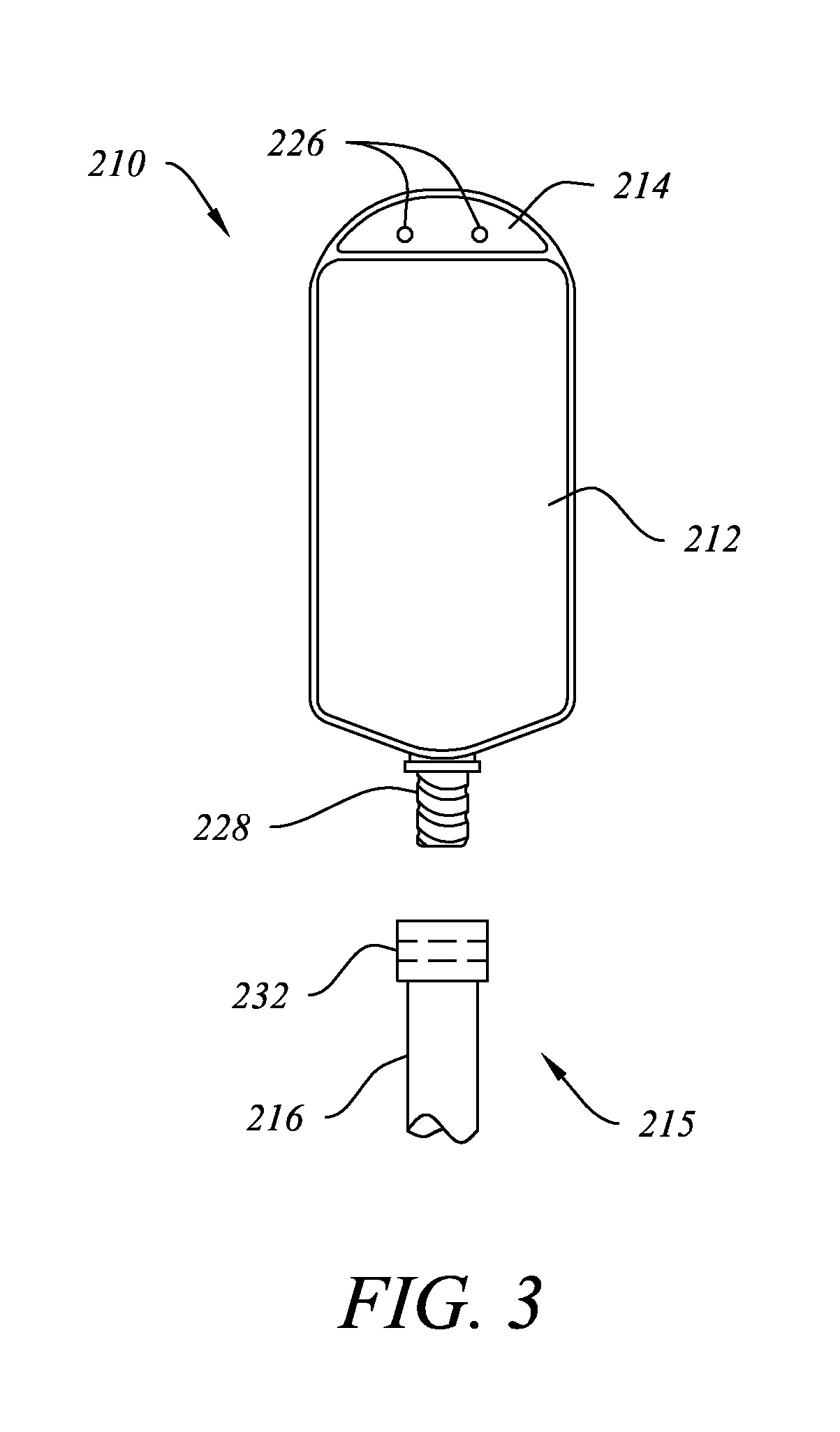For example, the
water activity in the feed can reduce the shelf-life of even the most stable bacterial forms.
Other encapsulation technologies including
spray drying extrusion,
emulsion and phase separation have been used, but with limited success and added expense.
Newer microencapsulation techniques using
calcium-alginate gel
capsule formation appear promising, but are still in the development stage and are not yet suitable for large industrial applications.
However, these formulas are generally complex and must be administered directly to each animal, which is
time consuming and may be difficult.
There are several drawbacks to the use of an on-site biogenerator to deliver probiotics.
The normal ambient temperature and environmental variations (such as
humidity) at sites where the device would typically be used, such as a barn, would result in adverse growth variations and inconsistencies without temperature and environmental control.
DFM products that deliver vegetative state
bacteria to the animals' feed or drinking water might also be more susceptible to the harsh
stomach environment once ingested by the animals and may not survive to reach the intestinal tract where the probiotics are generally most effective.
Additionally, the quantity of bacteria must be fed to the animals at the appropriate time and in a proper concentration to be effective, and this can be difficult to achieve with existing probiotic delivery technology.
Although these systems address some of the problems associated with probiotic delivery, they do not address problems related to the
environmental stability of the probiotic composition or automated and controlled dosing of the probiotic composition to a feed or
water supply.
Although the use of
spore form bacteria addresses the problems associated with temperature stability, the prior art does not provide an adequate
delivery system that eliminates outside
contamination while achieving
controlled delivery in a manner that is easily used in existing facilities without requiring any
retrofitting or additional power sources.
Another issue encountered in animal and
plant watering systems is bacteria populations in the drinking water and
water transport systems.
These biofilms can build-up, resulting in clogging parts of the
system, or portions of the
biofilm may also break-off causing additional clogging in other areas of the system, which reduce the amount of water available to the animals or plants.
This method may cause damage to parts of the water system and typically leaves behind a
mineral deposit from the
biofilm, which will serve as a shelter for micro-organisms and result in the
biofilm being reestablished.
There are a number of drawbacks to or difficulties with acidifying drinking water.
For example, it can be difficult to maintain the
pH level at a desired range (below 7 and usually below 5.5).
Applying single acids in drinking water typically results in the pH decreasing quickly, which can have negative results, such as less
water intake and decreased performance, including lower feed conversion rate and lower daily
weight gain in the animals.
The use of acids can also be corrosive to
metal components in the water system, resulting in added repair and replacement costs.
Incorrect use of acidified drinking water can also result in proliferation of bacterial populations and growth of
algae (which can result in further clogging of the water system) and reduction of feed intake (which can result in decreased
weight gain and inadequate absorption of nutrients).
Additionally, some acids are known to cause
fungal growth, which can clog system parts and be detrimental to the animal.
 Login to View More
Login to View More  Login to View More
Login to View More 


